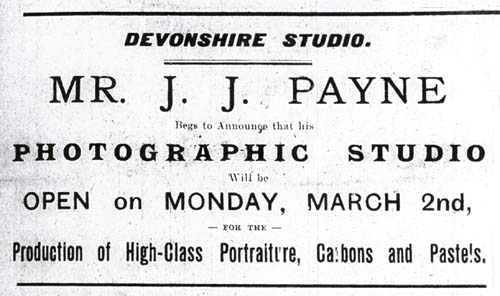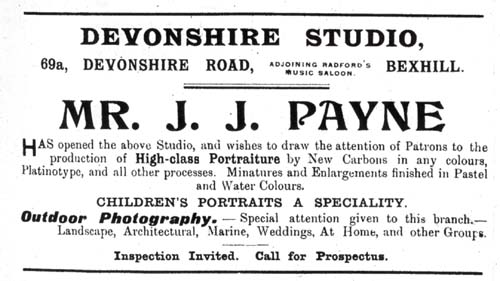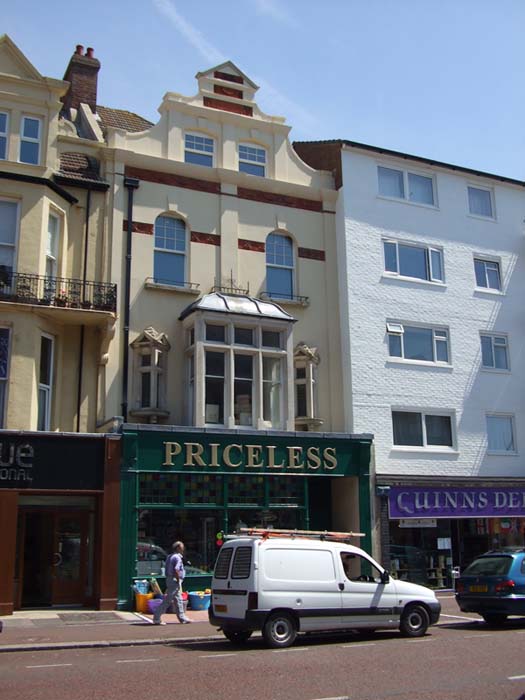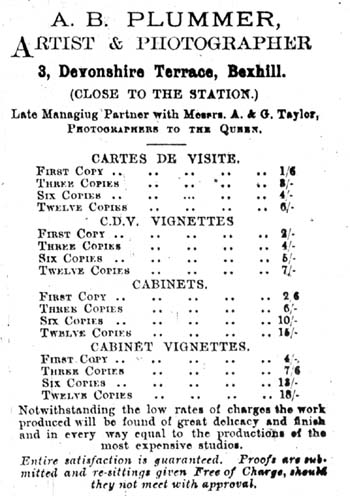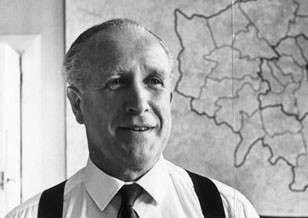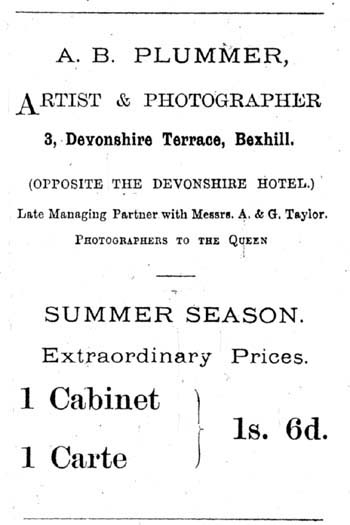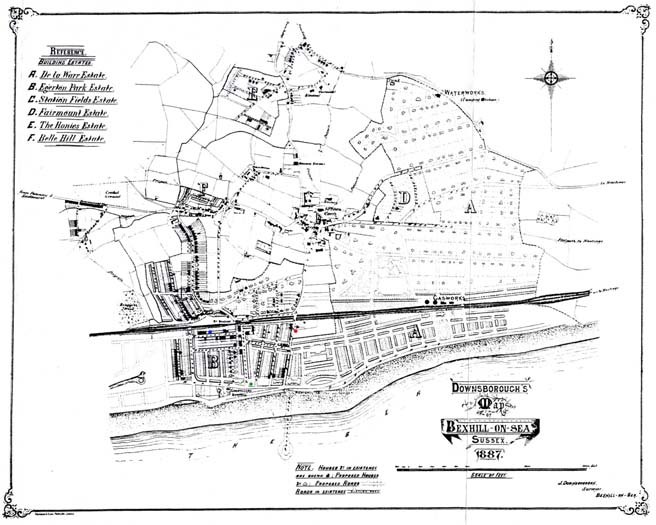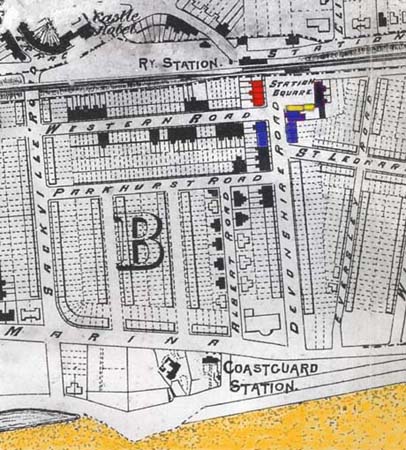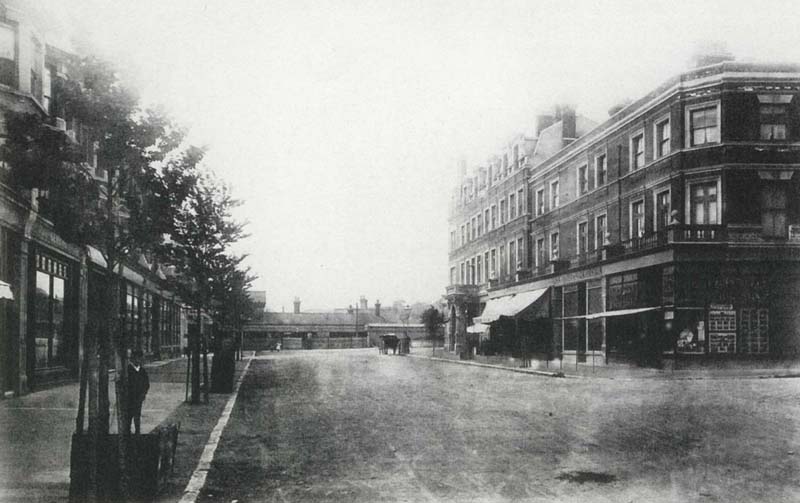|
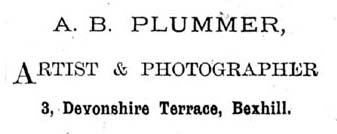
[ABOVE]
An advertisement for Arthur Bruges Plummer (1859-1932) who,
around 1887, became the proprietor of the first permanent photographic
portrait studio in the Sussex seaside resort of Bexhill-on-Sea.

[ABOVE] The trade
plate of the photographic firm of A. & G.
Taylor, taken from the reverse of a carte-de-visite produced at A. &
G. Taylor's Brighton branch studio at 34 Kings Road, Brighton
(c1884). Around 1886,
Arthur Bruges Plummer became the Managing Partner in A. &
G. Taylor's Brighton branch studio.
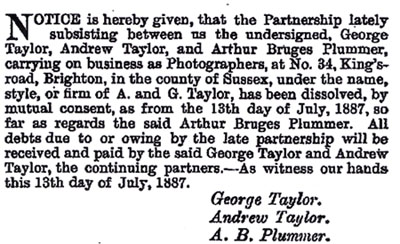
[ABOVE]
A notice in the London Gazette of 19th July 1887, announcing the
dissolution of the partnership between Arthur Bruges Plummer
and brothers Andrew and George Taylor of the photography firm of A. & G.
Taylor. Arthur Bruges Plummer had been the Managing Partner in
A. & G. Taylor's Brighton branch studio at
34 Kings Road, Brighton,
but parted company from Andrew and George Taylor in July 1887 when he
decided to establish his own photographic studio at 3 Devonshire Terrace,
Bexhill.
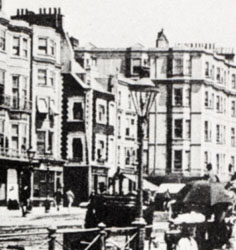
[ABOVE] A detail from a photograph of
Brighton's Kings Road, showing No. 34 Kings Road, Brighton (the dark,
flint-faced building in the centre of the picture), the site of A. &. G.
Taylor's Brighton branch studio . |
Arthur Bruges Plummer was born at Siddington, near Cirencester,
Gloucestershire, in 1859, the third son of Anne Herne Bruges and
Stephen Matthews Plummer, a gentleman farmer of Siddington. Stephen
Matthews Plummer (born c1824, Siddington, Gloucestershire), a wealthy
farmer, had married Ann Herne Bruges (born c 1830, Nettleton,
Wiltshire) in 1857 in the Wiltshire district of Devizes. This union produced
at least seven children - Seymour William Plummer (born 1858,
Cirencester, Gloucestershire), Arthur Bruges Plummer (born 1859,
Siddington, Glos.), Annie Matthews Plummer (born 1860, Peasemore,
Berkshire), Stephen Coventry Plummer (born 1862, Peasemore,
Berkshire), Jane Herne Plummer (born 1865, Peasemore, Berkshire),
William Herne Plummer (born 1865, Peasemore, Berkshire) and Catherine
Herne Plummer (born 1872, Speen, Berkshire).
Stephen Matthews Plummer died at his residence at The Castle,
Speen Hill, Berkshire, in 1879, aged 54. Mrs Ann Herne Bruges Plummer,
Stephen Plummer's widow, moved with her six children to a residential street
in Speen, Berkshire, near Newbury. The 1881 census, records Ann Herne
Plummer, described as a fifty year old widow, living with her three
daughters - Ann, Jane and Catherine - at 9 Beaconsfield Terrace, Speen.
At the time of the 1881 census, Mrs Plummer's three grown-up sons were
boarding in the northern suburbs of London with Mrs Mary Fegarty at 32
Marquis Road, Hornsey, Middlesex. Stephen Plummer was working as a
clerk and the eldest brother, Seymour Plummer, had found employment
as a "Ship's Broker", but twenty-one year old Arthur Bruges
Plummer gave his occupation simply as "Gentleman", which suggests
he was not working but was receiving funds from his late father. More money
probably came Arthur's way in the Summer of 1881, when his mother died at
her home in Beaconsfield Terrace, Speen, at the age of 51.
In 1884, Arthur Bruges Plummer married Clara Elizabeth
Batchelor (born 1862, St John's Wood, Middlesex), the daughter of
Elizabeth and Robert John Batchelor, an upholsterer from Willesden,
Middlesex. [The marriage of Arthur Bruges Plummer and Clara Elizabeth
Batchelor was registered in the London district of Fulham during the 4th
Quarter of 1884].
Arthur Bruges Plummer in Brighton
By 1886, Arthur Bruges Plummer and his
wife Clara were living in Brighton. The couple's first child
Stanton Bruges Plummer was born in Brighton during the 3rd Quarter of
1886. It was during this period that Arthur Bruges Plummer became the
"Managing Partner" in A. & G. Taylor's Brighton branch studio at 34 Kings Road, Brighton.
Andrew Taylor
(born 1832, Aberdeen,
Scotland) and his brother
George Taylor (born
1840, Aberdeen,
Scotland) had established the photographic firm of
A. & G. Taylor in 1864. Within twenty years, A. & G. Taylor had
become one of the largest photography firms in Britain with an extensive
chain of branch studios. By 1884, the firm of A. & G. Taylor was
operating from 45 branch studios, including four in central London and six
in the United States. George Taylor had vowed that he would not rest
"until I have placed a portrait in every home in England, Scotland and
Ireland". To this end, Andrew and George Taylor had established
photographic portrait studios in all the major towns and cities of England
(Liverpool, Manchester, Leeds, Birmingham), Scotland (Edinburgh, Glasgow,
Dundee), Wales (Cardiff, Swansea, Carnarvon) and Ireland (Dublin). A. &
G. Taylor had also opened studios in Paris, New York, Boston and
Philadelphia.
Around 1882, A. & G. Taylor
established a photographic portrait studio in the Sussex seaside town of
Brighton. The Brighton branch studio of A. & G. Taylor was situated
on Brighton's seafront at 34 Kings Road, Brighton, a few doors away
from the Old Ship Hotel.
George Taylor and his older brother Andrew Taylor
appointed Arthur Bruges Plummer as the Manager of their studio at 34 Kings Road, Brighton.
As part of the business package, Arthur Bruges Plummer also became a
partner in the Brighton branch studio. The firm of
A. & G. Taylor provided each of their local
managers with a partnership interest in a particular
branch studio, because this would provide, in the words of George Taylor,
"a greater incentive to use his best efforts
than even a payment by commission could supply".
After two or three years, Arthur Bruges
Plummer decided to leave Brighton and the firm of A. & G.
Taylor and establish his own photographic portrait studio in the nearby
seaside town of Bexhill-on-Sea. A notice placed in the London Gazette
on 19th July 1887, announced that "the Partnership" between "George
Taylor, Andrew Taylor, and Arthur Bruges Plummer, carrying on business as
Photographers, at No. 34 King's-road, Brighton, in the county of Sussex,
under the name, style, or firm of A. and G. Taylor, has been dissolved, by
mutual consent, as from the 13th day of July 1887." Arthur Bruges
Plummer apparently left A. & G. Taylor on good terms, as the notice went
on to state that "all debts due to or owing by the late partnership will
be received and paid by the said George Taylor, Andrew Taylor". Andrew
and George Taylor already had a replacement lined up to take over the
management of their branch studio at 34 Kings Road, Brighton. In
1886, the photographer Robert Bourne was introduced as the Manager of
the A. & G. Taylor studio at 34 Kings Road, Brighton and
presumably in the following year he was invited to become Arthur Plummer's
successor as the "Managing Partner" of A. & G. Taylor's branch studio at 34 Kings Road, Brighton.
| |
|
A. & G.
Taylor's Studio in King's Road, Brighton |
|
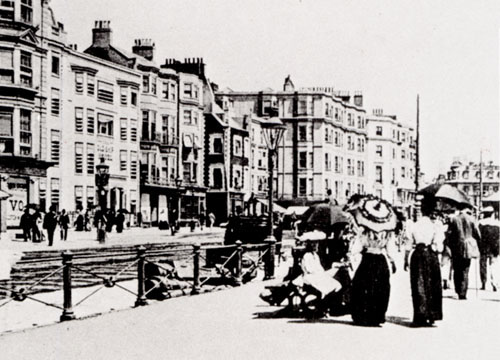 |
|
[ABOVE] Brighton's Kings Road,
photographed in the Summer of 1893. The dark, flint-faced building in the centre of the
picture was No. 34 Kings Road, Brighton, the site of the studio and business
premises of the photographic firm A. &. G. Taylor, managed by
Arthur Bruges Plummer in the 1880s. |
|
